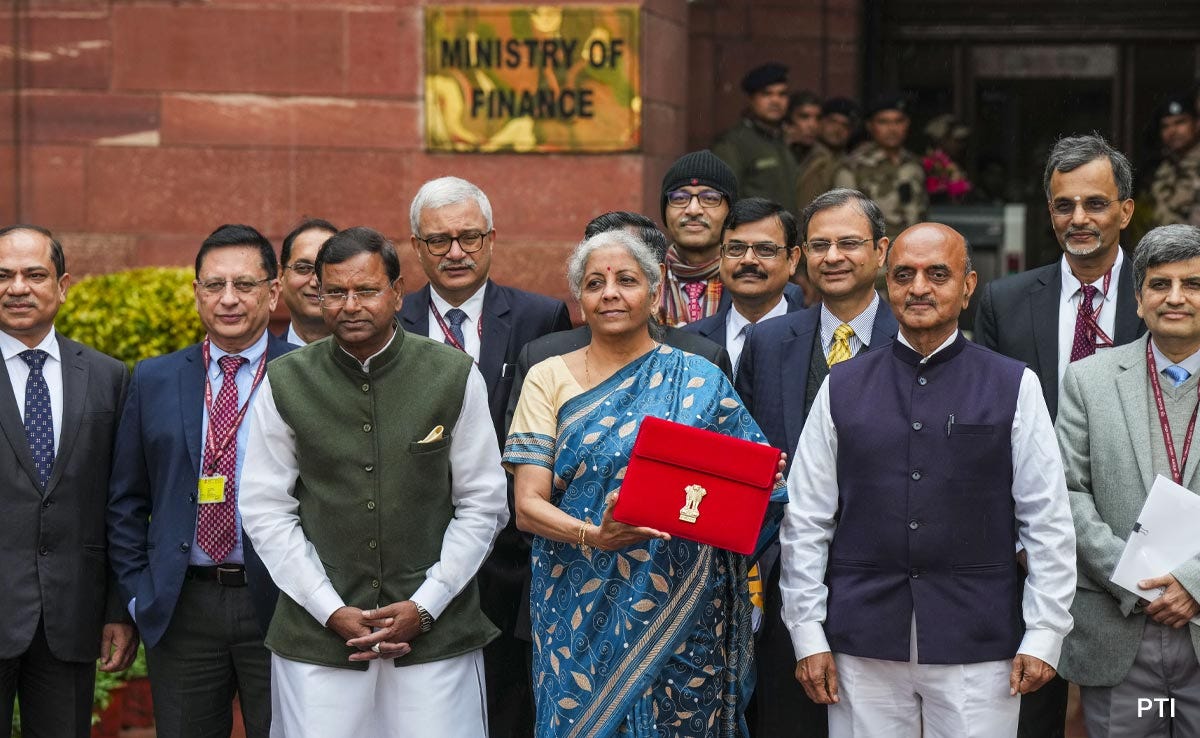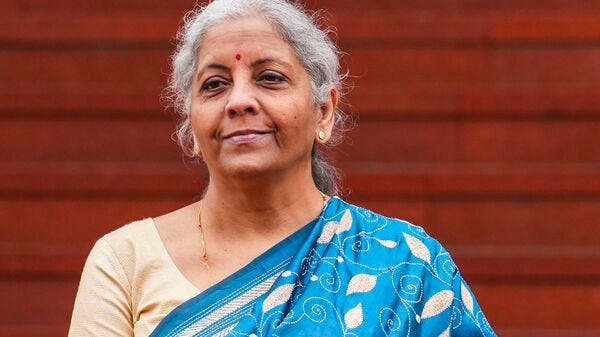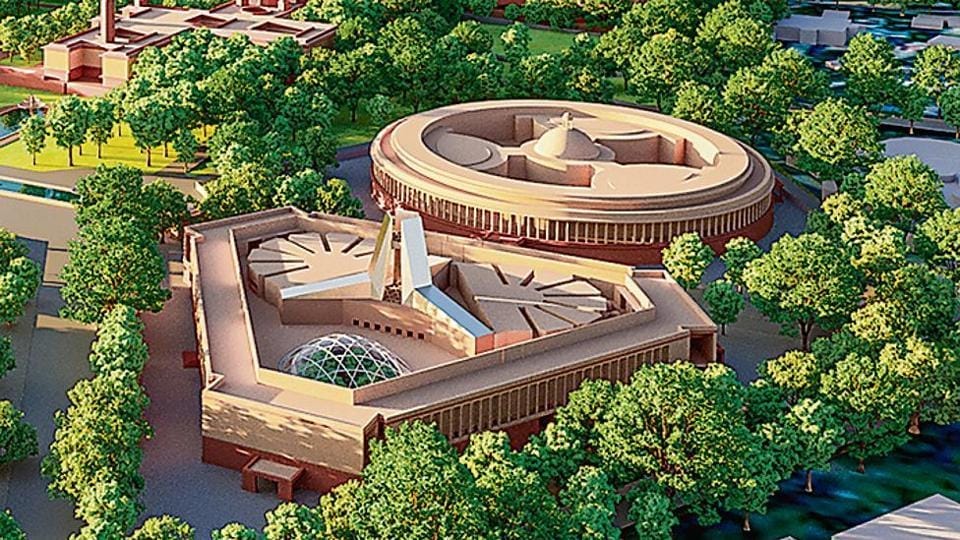PM Modi's "Invisible Hand" in the Budget (2024-25)
5 Hidden Gems in the in the Budget (2024-25): Curated by us and explained for the our readers in simple, non-technical terms.
Unpacking the Hidden Gems of Interim Budget 2024-25
In the wake of the presentation of the Interim Budget 2024-25 by Finance Minister Smt. Nirmala Sitharaman yesterday, we are poised to embark on a detailed examination, zeroing in on five pivotal aspects of the Budget, subtly influenced by PM Modi's "Invisible Hand." These elements, carefully selected for their capacity to either generate optimism or warrant caution, require not only further clarification from the Government but also an in-depth analysis from our team. With a commitment to providing unique and insightful perspectives that stay ahead of conventional media coverage, we have chosen these aspects with a keen eye on their potential impact on the wider populace.
Join us as we navigate through these five key proposals, dissecting them in no particular order. We aim to shed light on their nuances and potential implications, offering a fresh understanding of what they signify for the fiscal year 2024-25 and beyond.
1. Comparing Growth in Revenue Receipts and Expenditure for 2023-24 and 2024-25
In the Revised Estimates for 2023-24, the total receipts other than borrowings were pegged at ₹27.56 lakh crore, with tax receipts constituting a healthy ₹23.24 lakh crore of this amount. The total expenditure for the same period was estimated at ₹44.90 lakh crore. Moving forward to the Budget Estimates for 2024-25, the total receipts excluding borrowings are projected to be ₹30.80 lakh crore, and the estimated tax receipts are set at ₹26.02 lakh crore, with the total expenditure forecasted at ₹47.66 lakh crore.
Analyzing these figures reveals a notable trend: the total revenue receipts are expected to grow by approximately 11.76%, outpacing the growth in total expenditure, which is projected at about 6.15%. This disparity in growth rates is a positive indicator for the fiscal health of the economy, suggesting that the Government's income is increasing at a faster rate than its expenses. Such a trend is conducive to a more sustainable fiscal environment, potentially leading to a healthier budgetary balance in the long term and a moderate inflation scenario.
2. Prudent Fiscal Management: A Path to Sustainable Consolidation
The fiscal strategy outlined by the Finance Minister on the floor of the House reveals a commendable trajectory towards fiscal consolidation, underscored by actual figures rather than just rhetoric. For the financial year 2024-25, the gross and net market borrowings through dated securities are estimated to be ₹14.13 lakh crore and ₹11.75 lakh crore, respectively, marking a decrease from the previous year (2023-24). This reduction in borrowing, even as the economy exhibits robust growth with an annual real rate of around 7% and buoyant tax revenues from both direct and indirect sources, reflects not only a sound fiscal policy but also an encouraging future trend.
Moreover, the tax-to-GDP ratio remains reasonable, indicating efficient revenue mobilization. The projected fiscal deficit as a percentage of GDP for 2023-24 is 5.8%, a slight decrease from the budgeted 5.9%, and a significant reduction from the 6.4% observed in 2022-23. Looking forward, the deficit is expected to be reined in to 5.1% in 2024-25. This progression is in alignment with the Government's goal of reducing the fiscal deficit to below 4.5% by 2025-26.
Such figures not only demonstrate the Government's commitment to prudent fiscal management but also validate the assertion that India is on a sustainable path to fiscal consolidation. This approach balances the need for growth stimulation with the imperative of maintaining fiscal discipline, ensuring long-term economic stability and health and an inflation that remains under control.
3. Aligning State Expenditures with National Development Goals
In a significant move, the Finance Minister has announced the continuation of the fifty-year interest-free loan scheme for capital expenditure to states, with an allocation of a whopping ₹1.3 lakh crore for the year 2024-25. Additionally, ₹75,000 crore is proposed as a fifty-year interest-free loan to support the milestone-linked reforms aligned with the 'Viksit Bharat' vision during the current year. It is expected that these funds shall devolve to the states immediately, before the ECI’s Election Code of Conduct kicks in. This strategic decision marks a shift in how central funds are channelized to states, focusing on long-term development rather than immediate fiscal support or fire-fighting measures such as meeting debt repayment obligations.
It's noteworthy that the amount reserved for transfer to states in 2023-24 was ₹3,24,641 crores, which has seen a reduction of nearly 12% to ₹2,86,787 crores in the 2024-25 Budget. This reduction is, however, more than compensated by the provision of long-term, zero-interest loans, effectively functioning as grants-in-aid. However, these funds will be recorded as debt in the states' accounts, ensuring a check against unproductive and indiscriminate borrowing and spending.
This innovative approach ensures that only those states aligning their schemes with the Government of India’s guidelines for the 'Viksit Bharat' vision will benefit from the scheme. Critics who focus on the dip in the states' share in central taxes overlook the fact that these grants, outside the purview of the Central Finance Commission (CFC), are allocated with the simple condition of aligning with national development priorities, rather than convoluted eligibility criteria CFC.
This initiative is commendable, especially in light of the often bureaucratic intricacies and stringent conditionalities imposed by the CFC, which can lead to perceptions of discrimination among states. The scheme represents a significant fund reserved for states, not as indiscriminate or discretionary largesse, but for judicious expenditure on human resource and infrastructure development. Unfortunately, this nuanced aspect of fiscal management has not been adequately captured by analysts or highlighted in official press notes and TV briefings. It represents, to our mind, a hidden gem in the Budget, embodying a forward-thinking approach to align state-level fiscal management with national developmental goals.
4. Fostering Youth Innovation: A Paradigm Shift in Empowerment and Employment
The Government's proposal to establish a corpus of Rupees One Lakh Crore, focusing on boosting private investment in sunrise technologies, signifies a transformative shift towards empowering the youth and nurturing innovation. As announced by Finance Minister Smt. Nirmala Sitharaman, this initiative is set to herald a golden era for India's tech-savvy youth, combining long-term financing options with the dynamism of youth and technology.
This innovative corpus, backed by a fifty-year interest-free loan, is designed to not only foster research and innovation in advanced technological domains but also to ensure practical application and efficiency. This approach goes beyond the confines of ivory tower academic research, grounding it in real-world applications with a clear emphasis on employment generation and economic impact.
Particularly noteworthy is the proposed scheme aimed at bolstering deep-tech technologies in defense and promoting 'Atmanirbharta' (self-reliance). This initiative underscores the importance of new age technologies and data in transforming lives and businesses, especially for those at the 'bottom of the pyramid.' It recognizes the expanding global opportunities for India, driven by the innovation and entrepreneurship of its people.
Moreover, this scheme embodies a significant paradigm shift. If the selection of beneficiaries and the ease of fund disbursement can circumvent the traditional bureaucratic pitfalls associated with PSU banks and local functionaries, and if merit remains the sole criterion for selection, this initiative has the potential to revolutionize the landscape of youth empowerment and self-employment in India.
Echoing the progressive visions of past Prime Ministers, from Lal Bahadur Shastri's "Jai Jawan Jai Kisan" to Atal Behari Vajpayee's addition of "Jai Vigyan," Prime Minister Modi further extends this to include "Jai Anusandhan" (Hail Research), acknowledging innovation as the cornerstone of development. This corpus is more than a financial instrument; it's a commitment to nurturing the seeds of innovation and entrepreneurship in the youth, propelling India towards a future of technological advancement and robust economic growth.
5. Writing Off Petty Income Tax Dues: Relief for One Crore Taxpayers
The latest fiscal measures unveiled in the Interim Budget highlight a two-pronged approach: robust consumer confidence reflected in consistently high GST collections and a pragmatic strategy towards the management of outstanding income tax arrears.
On the one hand, the remarkable buoyancy in revenue collections is evidenced by the impressive GST collections, which stood at ₹1.65 lakh crore in December 2023. This marked the seventh instance where gross GST revenues surpassed the ₹1.6 lakh crore benchmark, a clear indication of robust consumer confidence and no signs of economic slowdown. This high GST collection benefits not only the Central Government but also the states, ensuring a balanced financial advantage across the board.
On the other hand, the Budget addresses the long-standing issue of outstanding direct tax arrears. In an astute move, the Finance Minister has announced the write-off of old income tax outstanding arrears up to ₹25,000 for periods up to the financial year 2009-10, and up to ₹10,000 for financial years 2010-11 to 2014-15. This decision, benefitting about one crore taxpayers, is not just a fiscal concession but a prudent administrative and equitable measure. It recognizes the disproportionate energy and resources spent by the Income Tax Department on recovering these dues, often resulting in a multiplicity of litigations with poor recovery prospects due to various reasons like the death of assesses or untraceability.
The write-off of these arrears is a significant relief for small taxpayers and a rationalization step for the tax administration. By eliminating these longstanding dues, which often involved relatively less well-off individuals, the Income Tax Department can now refocus its efforts on future compliance and effective tax collection.
The direct tax collection, which has tripled over the last decade with the number of return filers increasing 2.4 times, demonstrates the government's commitment to enhancing taxpayer services. This fiscal strategy, combining strong revenue growth with fair and efficient tax administration, exemplifies a balanced approach to nurturing a healthy economy while ensuring equitable treatment of taxpayers.
Deciphering PM Modi's 'Invisible Hand' in Shaping a Progressive Fiscal Future
The Interim Budget 2024-25, while seemingly understated, is in fact a virtual masterstroke of strategic fiscal planning, embodying Prime Minister Modi's 'Invisible Hand'—reminiscent of Adam Smith's concept in free-market economics. The Finance Minister, in crafting this Budget, has skillfully woven in subtle yet potent elements that may have eluded a cursory glance, but upon closer inspection, reveal a roadmap for sustainable economic growth and development.
This Budget is far from being a mere stop-gap arrangement for the first quarter; it is, instead, a well-orchestrated plan embedding seeds of growth that promise to bloom in the coming years. The five key aspects we have analyzed—ranging from the rationalization of revenue and expenditure growth to the innovative approach in state funding, and from empowering youth innovation to the pragmatic resolution of tax arrears—each represent a hidden gem, meticulously placed to drive India's growth trajectory forward.
These initiatives reflect PM Modi's vision of a Nation where fiscal prudence coexists with ambitious growth objectives, epitomized by the ‘Viksit Bharat-2047’ vision. The 'Invisible Hand' of the Prime Minister in this Budget is evident in its focus on long-term, sustainable development rather than short-term populist measures. It's a Budget that encourages innovation, promotes equitable fiscal management, and ensures that the benefits of economic growth reach every stratum of society.
As we conclude our analysis, it is clear that the Interim Budget 2024-25 is not just a routine financial statement but a strategic document laying the foundation for a robust economic future. It's an embodiment of PM Modi's foresight and acumen in steering the Nation towards a path of holistic development and prosperity. For those willing to read between the lines, this Budget unfolds as a visionary blueprint for India's continued ascent in the global economic landscape.





